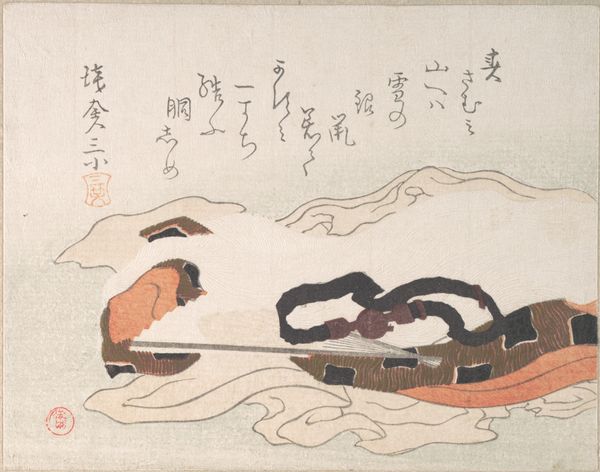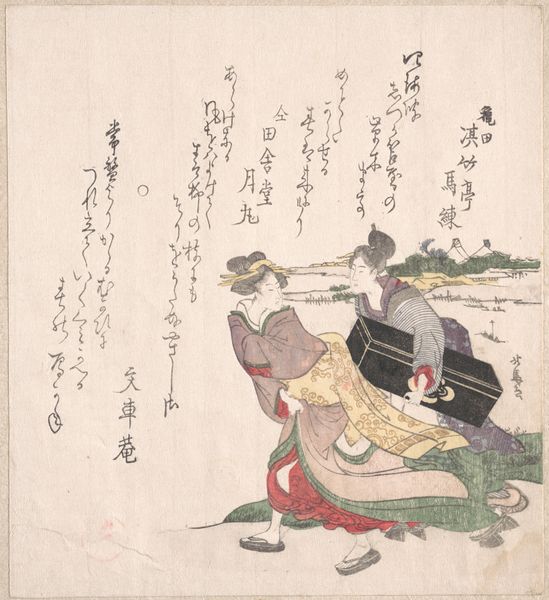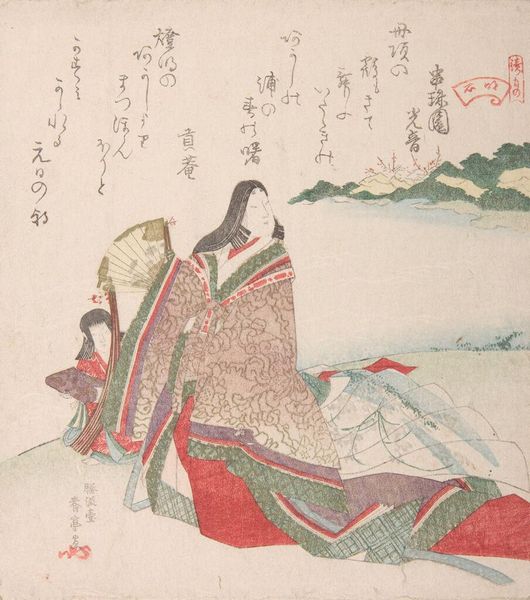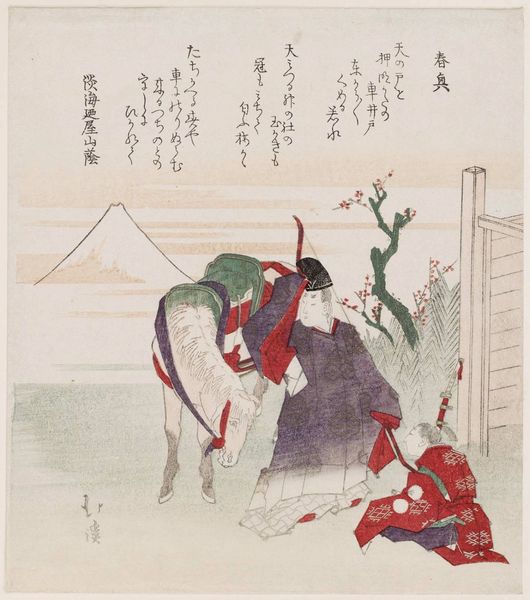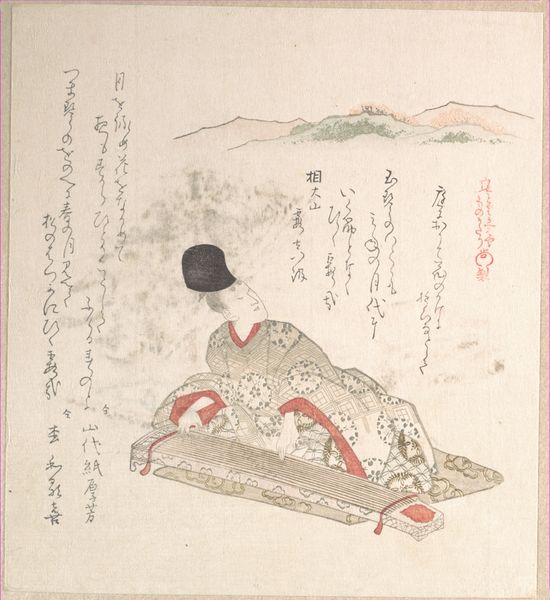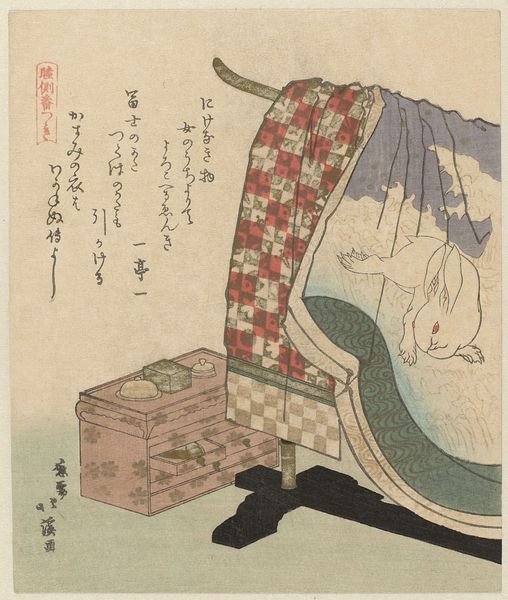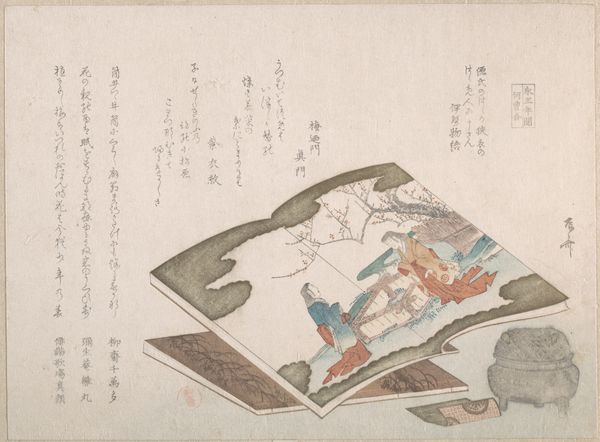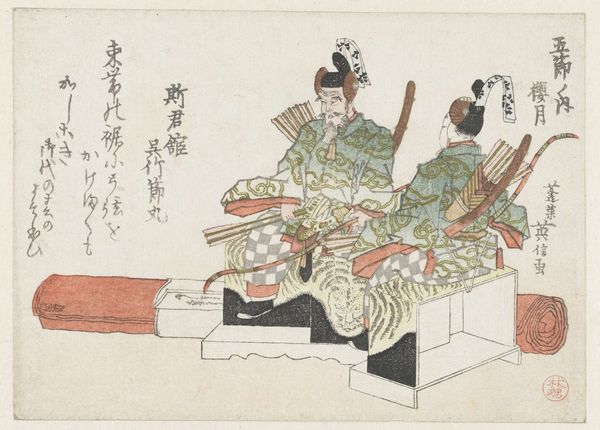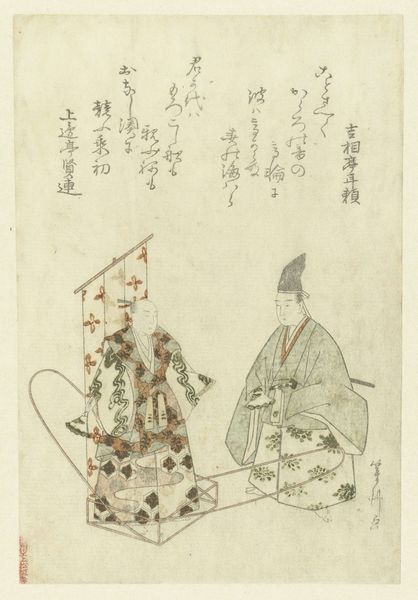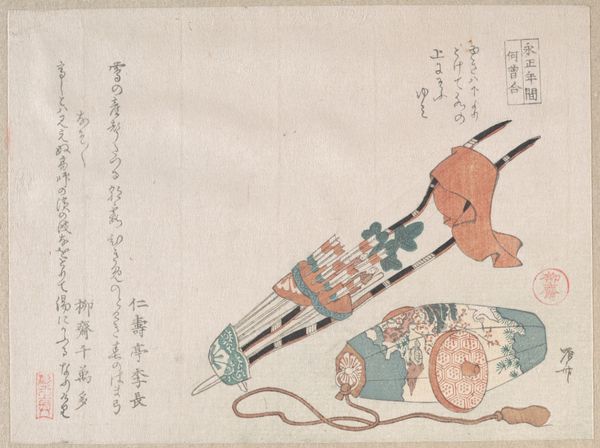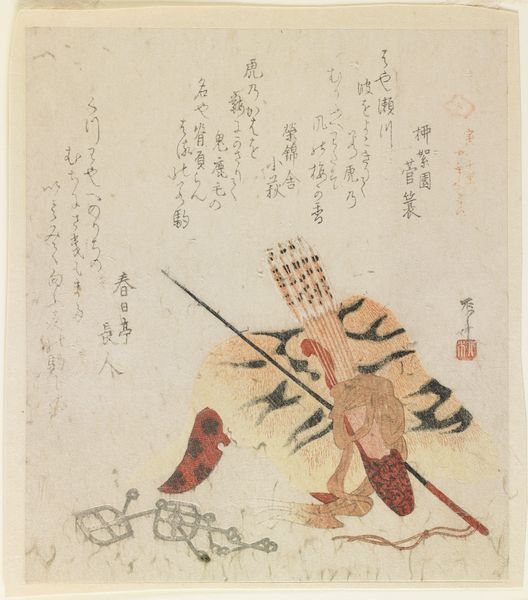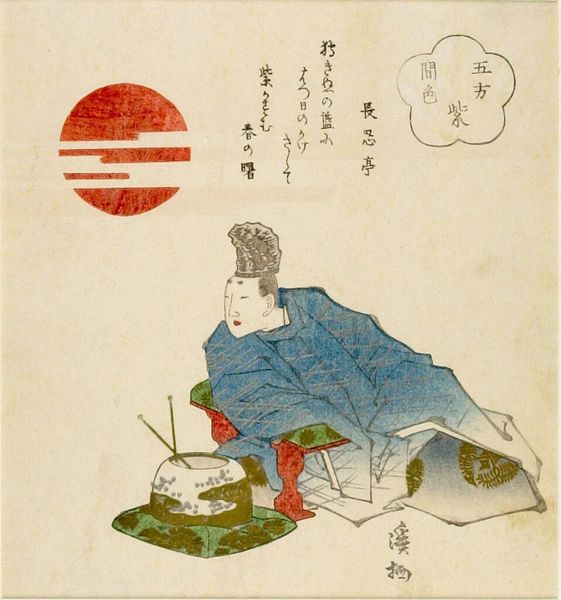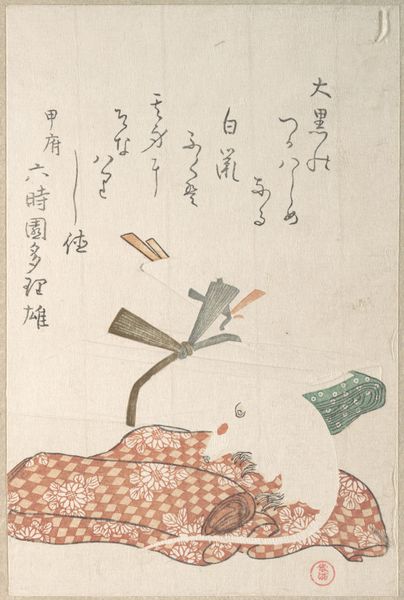
print, watercolor, woodblock-print
# print
#
asian-art
#
landscape
#
ukiyo-e
#
watercolor
#
woodblock-print
#
watercolour illustration
Dimensions: height 140 mm, width 187 mm
Copyright: Rijks Museum: Open Domain
Curator: What a delightful composition! At first glance, the lightness of the colour palette conveys a certain sense of serenity and simplicity. Editor: Agreed. It's deceptive though, isn't it? Before us, we have "The Treasure Ship," a woodblock print created around 1799 by Katsushika Hokusai, presently held at the Rijksmuseum. Look closely. This isn’t just about aesthetics, it’s steeped in the socio-economic realities of Edo-period Japan. Curator: Indeed. Let’s unpack this formal arrangement. Hokusai masterfully juxtaposes delicate lines and flat planes to draw the eye to this stylized ship overflowing with... goods, treasures I presume? And these Japanese inscriptions surrounding the ship. Their relationship to the image is interesting and could probably unveil new information about the piece. Editor: Precisely. This wasn't produced in a vacuum. The treasures symbolize prosperity, while Hokusai's print technique itself points to a growing commercial culture where art became more accessible. Note how this ukiyo-e print democratized art, using widely available wood and paper rather than being made from expensive silks or mineral pigments. This in turn would provide work for artisans and facilitate its consumption. Curator: I see your point, and I agree that context is crucial, but I can’t help but be captivated by the pure visuality. The harmonious blend of colours. Even the negative space surrounding the ship adds to its allure. The ship itself is carefully positioned and carefully painted: the meticulous arrangement of objects and the balance of textures, creating a compelling viewing experience. Editor: Absolutely. Hokusai knew his audience, understanding the market for accessible art forms that circulated within their communities. "The Treasure Ship," made with materials specific to its time, reflects economic transformation as much as it showcases the formal harmony that captivates us today. Curator: Considering both perspectives enriches the viewing experience. I find myself looking at Hokusai's composition with renewed appreciation for both its artistry and cultural context. Editor: Indeed, and recognizing the materials used and the cultural values that prevailed at the time broadens the piece's meaning. What at first glance seemed decorative now embodies profound statements about the role of art within the processes of labor and commodification.
Comments
No comments
Be the first to comment and join the conversation on the ultimate creative platform.
